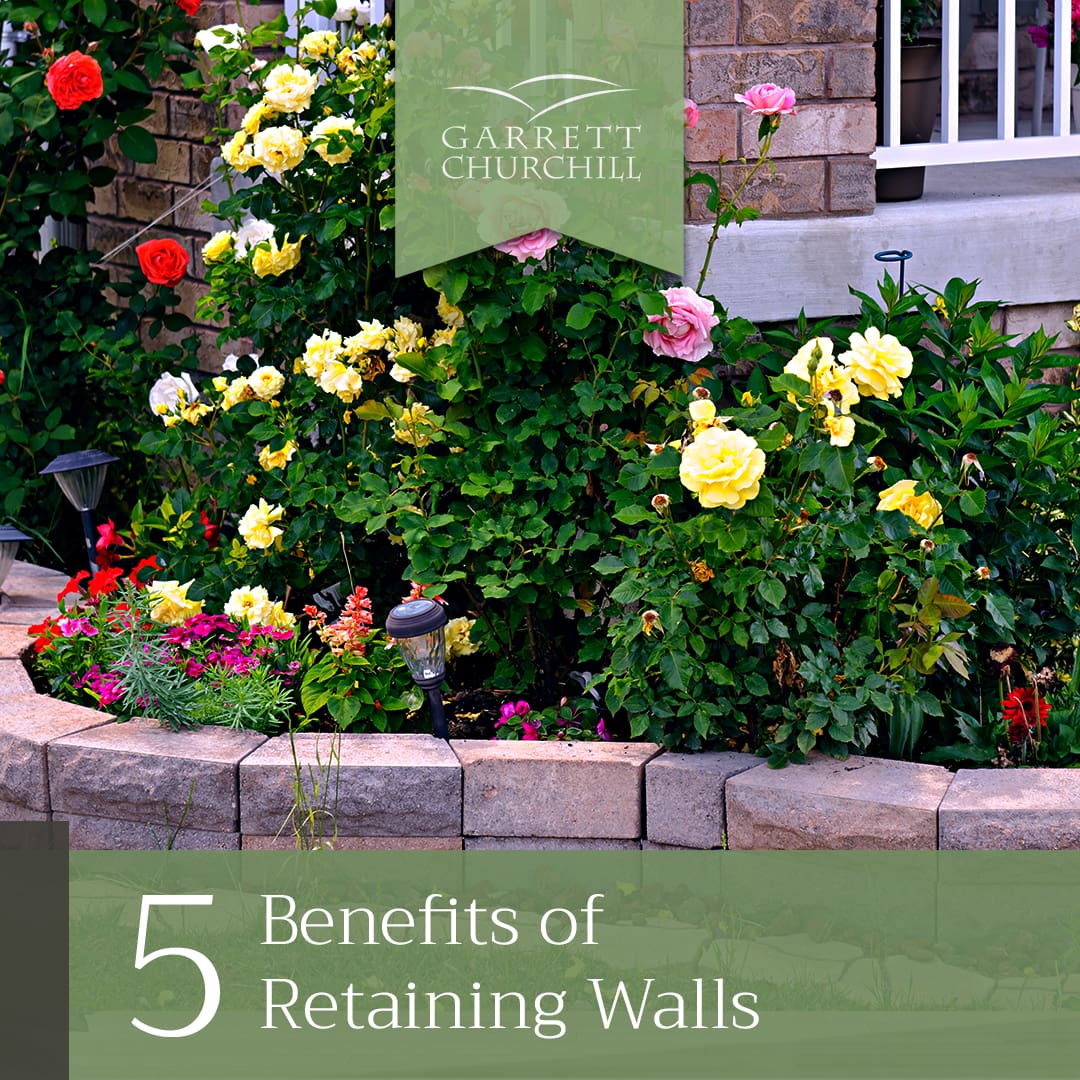5 Benefits of Retaining Walls
Any well-designed landscape is the result of thoughtful planning, with each yard’s unique features taken into consideration. With the right planning and materials, just about any space can be turned into a functional, aesthetically pleasing landscape.
For properties built on hills and slopes—and even for those that aren’t—retaining walls are well worth consideration. While they are primarily designed to retain soil, retaining walls offer a variety of functions and purposes. Read on to learn about a few of our favorite retaining wall benefits.
-
Structural Support
A retaining wall, as its name implies, retails soil behind its walls by turning sloped areas into flat, elevated surfaces behind a barrier. Holding soil in place is especially necessary when it comes to hills and slopes in order to prevent soil erosion. After all, no one wants a landslide ruining their beautifully designed landscape.
Retaining walls can also offer flood control by allowing water to soak into the flat-surfaced soil, rather than running off the slope. Some retaining walls also contain water control and drainage features, making them especially effective.
-
Functional Space
In addition to preventing soil erosion and flooding, retaining walls can turn seemingly unusable yard space into functional features. Turn hills and mounds into usable, terraced space for gardens, patios, outdoor seating, and more.
If you don’t have a hilly space to work with, you can still utilize the benefits of retaining walls by created separated, stacked sections to give your garden an extra boost. If you have plants that need a different type of soil or fertilizer than others, create a small retaining wall so they can grow in their own personalized flower bed.
-
Reduced Maintenance
By preventing soil erosion, flooding, and sinkholes, you’re preventing yourself from having to do some extra work on your yard and home such as re-planting gardens affected by erosion or fertilizing areas with loss of soil. Plus, a well-designed retaining wall can keep water from flowing into your home and soil from sliding into your lawn or garden.
While it may seem like a big investment of time and energy, a high-quality retaining wall should be relatively hands-off when it comes to maintenance.
-
Aesthetics
The ideal landscape is visually appealing as well as functional. In addition to their practical benefits, retaining walls can add an element of texture to any landscape. They can also work as an eye-catching focal point in your yard, with complementary hardscape and softscape design elements.
You can use a variety of materials for your retaining wall, including concrete, stone, bricks, and even wood. With the vast availability of options, it’s not difficult to design your retaining wall so that it fits in seamlessly with the rest of your landscape.
-
Increased Property Value
Aesthetics and functionality go hand-in-hand when it comes to boosting the value of your property. Along with curb appeal, retaining walls give any property an added element of durability, especially in hilly areas with structural concerns.
Retaining walls can also create clear property boundaries, which is useful if there’s a blurry line between where your property ends and your neighbor’s property begins.
Investing in landscaping can increase your home’s value by up to 15 percent. Set your home apart from others by investing in the right landscaping company as well.
At Garrett Churchill, we offer on-site consultations for value-boosting landscaping solutions that stand the test of time. Contact us today at 215.657.9160 or info@garrettchurchill.com to learn more.
